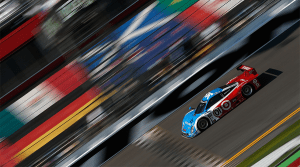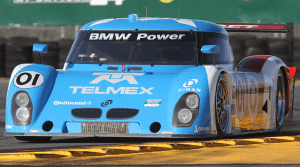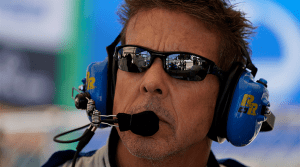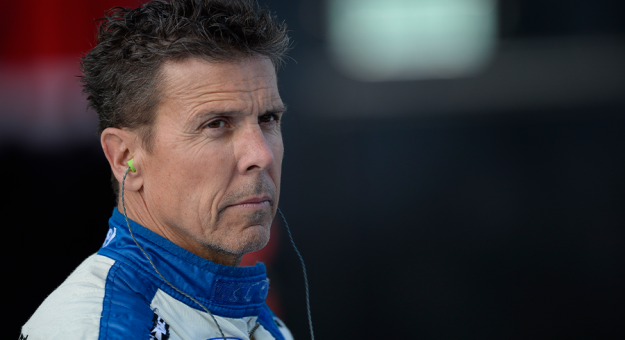Signature events are an important part of sports and it’s no different in motorsports with events such as the Daytona 500, Indianapolis 500, Chili Bowl Nationals and Knoxville Nationals.
When it comes to the big stage for the IMSA WeatherTech SportsCar Series, the Rolex 24 At Daytona is that event. The race will be run for the 61st time this weekend.
Nobody has celebrated more at the 3.56-mile Daytona International Speedway road course than Scott Pruett.
With a whopping 10 Rolex 24 timepieces earned at the prestigious Rolex 24 At Daytona, Pruett enjoyed tremendous success at Daytona until his retirement in 2018.
Half of Pruett’s Rolex 24 victories were overall triumphs, tying him with Hurley Haywood for the most all-time.
Why Is The Rolex 24 Special?
What makes Pruett’s career unique, is his diverse background in American motorsports.
Alongside his countless Rolex 24 starts, the 62-year-old has also competed in the Indianapolis 500 and the Daytona 500.
For Pruett, the Rolex 24 has a unique feel that is unmatched by The Greatest Spectacle in Racing or The Great American Race.
“It’s this cohesive victory that is equally shared by so many,” Pruett told SPEED SPORT. “Whether it was the engineers, or the guys going over the wall, or the multiple drivers you have in a car.

“It’s a race around the clock. Two times around the clock, and it is just absolutely amazing. When you wake up, I never really slept, but I stayed pretty frosty and rested. Then they’d come get you and it’s 4 a.m., it’s dark, it’s raining and it’s foggy.
“All right, here we go, let’s go racing. So it’s definitely this challenge of man and machine as well as conditions because you keep racing.”
To conquer the countless trials and unexpected twists that 24 hours of racing can bring, is something Pruett relishes.
“You never know what to expect,” Pruett said. “You’re faced with whatever Mother Nature throws at you, and then whatever the race track and your car throws at you.
“If you can make it to victory lane, it is something that is incredibly special. To get that Rolex Daytona that says ‘Winner’ on the back is something that is cherished by everyone who has won that race.”
Creating A Rolex 24 Winning Car
Well before teams and drivers can think of the sweet taste of victory, comes the formation of a driver lineup. Teams tend to go with three or four drivers per entry, hoping to maximize their performance.
A large part of Pruett’s sports car success came with Chip Ganassi Racing, where he helped make the No. 01 machine a menacing prototype category opponent.
When it came to Daytona, Pruett was often paired with some of racing’s most-storied names, drivers such as six-time NTT IndyCar Series champion Scott Dixon, two-time Indianapolis 500 winner Juan Pablo Montoya and three-time Indianapolis 500 winner Dario Franchitti, among others.
With multiple drivers sharing the car, finding a solid balance can be challenging.
Though CGR always found middle ground quickly, especially when Pruett’s co-drivers were all in agreement of who should handle setup duty.
“It’s funny because driving with Dixon, Montoya, Franchitti and these other guys, the part that I loved about it, all of them said, ‘Just let Scott set up the car, we’ll be good.’
“I really wanted to make the setup of the car where it was very comfortable for everybody,” Pruett said. “In working together with drivers that understand, you’re not going to get it perfect for you. We need to get it as perfect as they can for all the teammates involved.”
Fortunately for Pruett and the Ganassi group, all the drivers tended to like the car’s setup within the same area. The next step for the team was making the car comfortable to steer around the track.

“We got it as benign as we could, as easy to drive as we could,” Pruett said. “Would it be the fastest? Maybe, maybe not. It’d still be fast, but it wouldn’t be razor sharp, as far as being difficult to drive. It had a nice sweet spot to it.”
Having a consistent car is the key to success in the Rolex 24, even if it means the car isn’t blazing fast out of the gates.
“We’re not looking for the last tenth. We’re looking for that consistency over a fuel run and hour after hour, and what’s easy on the tires, what’s as easy as it can be to have this nice sweet spot where you can run fast,” Pruett said.
With multiple classes running different paces, having a car that can tackle the ebbs and flows with ease is something Pruett feels is crucial.
“You’re always off line, you’re always passing guys, you’re always doing things to carve your way through traffic,” Pruett said. “With that, you need a car that has just a really nice sweet spot to it, that lets you do all that and get away with all that.”
Staying Fresh For 24 Hours
Once the race begins, there’s no room for error. Physical and mental fitness becomes important, especially when the hours begin to drag out.
With training being the key to longevity in the car, the process of being prepared begins well in advance of the race.
“It’s not something that you’re just going, ‘Oh, I’m going to change my diet going into race weekend.’
“No, I mean you’re continually training,” Pruett said. “Even back in the day, mid to late 1980s, people weren’t training and really focused on diet, hydration and all those different elements that we work hard at now.

“But, it’s more of this process of keeping yourself in shape, and then knowing what to do.”
After a long stint inside the cockpit, the driver needs to rest and rehydrate.
“Go back to the motorhome and chill out,” Pruett said. “My first couple years going back to a van that we actually slept in. Go back to the van and chill out, and just be focused on you. You don’t have to focus on the race, you need to focus on you to be able to get plugged in when you’re called.”
The Claw To Secure Victory
As the night rolls on, drivers and teams are faced with challenges ranging from the elements to fatigue.
“The most difficult always tends to be that, three, four or five in the morning,” Pruett said. “It’s just before sunrise and we’re racing this race at a time of year, where in January, the night is quite long. So the amount of darkness you have is pretty great.
“So you’re dealing with those conditions, it’s dark and everybody’s cold. You’re going out on cold tires, it’s really treacherous, and trying to get them just up to temp, and/or if it’s raining and cold,” Pruett continued.
“You have to overcome all those obstacles continually. The top teams, the top drivers, they’re ready for that, especially if you’ve done it multiple times.”
Through the cold, treacherous night, comes sunrise, a reward for those who have persevered.
With 10 Rolex 24 victories and countless memories, there must be one that stands out, right?
“There isn’t. I mean for sure, my first overall, you always look back at that. Your very first, back in 1987 making it to victory lane with Ford,” Pruett said. “Then with Nissan, my first overall (1994). But it’s still just a magical place. I love going down there. I love being a part of the action.
“I just love the environment. I love the track. I just love everything about that place and still do.”
Follow @DHoffmanMedia22